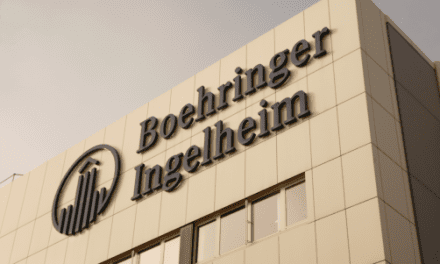Treatment with selexipag versus placebo improved clinical outcomes in patients with pulmonary arterial hypertension (PAH) regardless of the time from diagnosis to selexipag initiation, according to data presented at ATS 2019 by Actelion Pharmaceuticals Ltd. Data from the GRIPHON study also found that the treatment effect was more pronounced in those receiving selexipag soon after diagnosis.
Selexipag is an oral selective prostacyclin IP receptor agonist and is available for the treatment of PAH in more than 40 countries. In the US, selexipag is indicated for the treatment of PAH to delay disease progression and reduce the risk of hospitalization.
The study evaluated the long-term efficacy and safety of oral selexipag in 1,156 patients with PAH across 181 centers from 39 countries. It demonstrated a 40% reduction in the primary composite endpoint of morbidity/mortality, defined as disease progression, worsening of PAH resulting in hospitalization, initiation of intravenous [IV] prostanoid therapy or long-term oxygen therapy, or the need for lung transplantation or balloon atrial septostomy, or death from any cause.
Overall, the most common adverse events for patients receiving selexipag were headache, diarrhea, nausea, and jaw pain.
This post-hoc analysis evaluated the impact of time from diagnosis to initiation of selexipag on the treatment response with respect to the primary endpoint of the study.
Patients were categorized at baseline based on their time from diagnosis using a six-month threshold. Patients treated earlier were defined as those who received treatment ?6 months from diagnosis (N=404), and those who were treated later received treatment >6 months from diagnosis (N=752). Selexipag reduced the risk of morbidity/mortality, compared with placebo, in both groups with a risk reduction of 55% for those treated earlier (HR, 0.45 [95% CI: 0.33–0.63]) and a risk reduction of 30% for those treated later (HR, 0.70 [95% CI: 0.54–0.91]). The response was more pronounced in those treated earlier (interaction p-value, 0.0391). This pattern was observed in all background PAH therapy subgroups.
The results of the analysis are consistent with other studies and clinical guidelines that support the early initiation of treatment for PAH.
“This post-hoc analysis of the GRIPHON study adds to the growing body of research which indicates that selexipag can have a significant impact on a patients’ morbidity and disease progression, irrespective of background therapy,” said Alessandro Maresta, MD, VP and Head of Medical Affairs at Actelion Pharmaceuticals Ltd. “At Actelion, we have helped impact the lives of more than 300,000 patients with PAH globally over the past 20 years. Today, it is essential that current treatments are used to their fullest potential so that we slow disease progression and significantly improve outcomes.”










